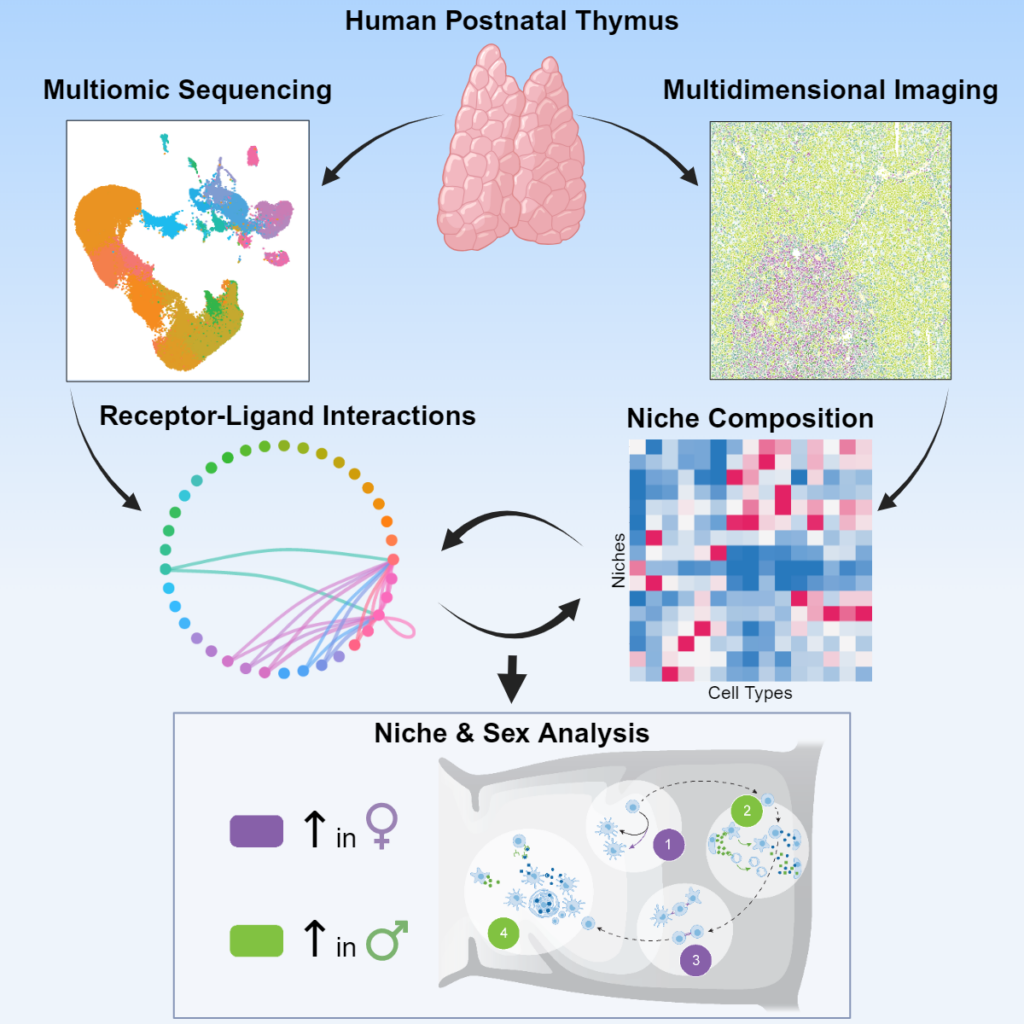A recent study led by SBME’s Laura Stankiewicz, Dr. Megan Levings, Dr. Peter Zandstra and Dr. Fabio Rossi contributes to the understanding of the differences in immune system development in males and females.

The study applied spatial multiomics, which utilizes epigenomics, transcriptomics, and proteomics to analyze early postnatal T cell development. T cells are an important part of the immune system that develops in the thymus and help protect the body from infection. The study showed that sex-based differences in thymus biology and T cell development arise before puberty, providing an essential contribution to our understanding of the mechanisms underlying immune health and disease in males and females. These sex differences were present across different levels of cell and tissue regulation, and included differences in metabolic regulation, levels of proinflammatory signaling, and thymus size control mechanisms.

“The results indicate that sex biases are presented earlier than expected and should prompt researchers to evaluate when they start to think about the effect of sex differences in biology,” comments Stankiewicz.
The team tested hypotheses generated from their study in an in vitro culture system which replicates the thymus microenvironment. The in vitro culture system presents a powerful platform for future researchers to test how these sex-specific differences in T cell development may lead to known differences in immune responses between sexes, such as the increased autoimmune disease incidence among females and increased infection susceptibility in males.
The study provides an essential resource for immunologists looking at age-dependent immune system dynamics and may provide pharmaceutical developers with a more accurate framework to develop medicines targeted towards the different immune systems in females and males. Moving forward, this study highlights the importance of including sex-based differences as an important variable in future biological studies.